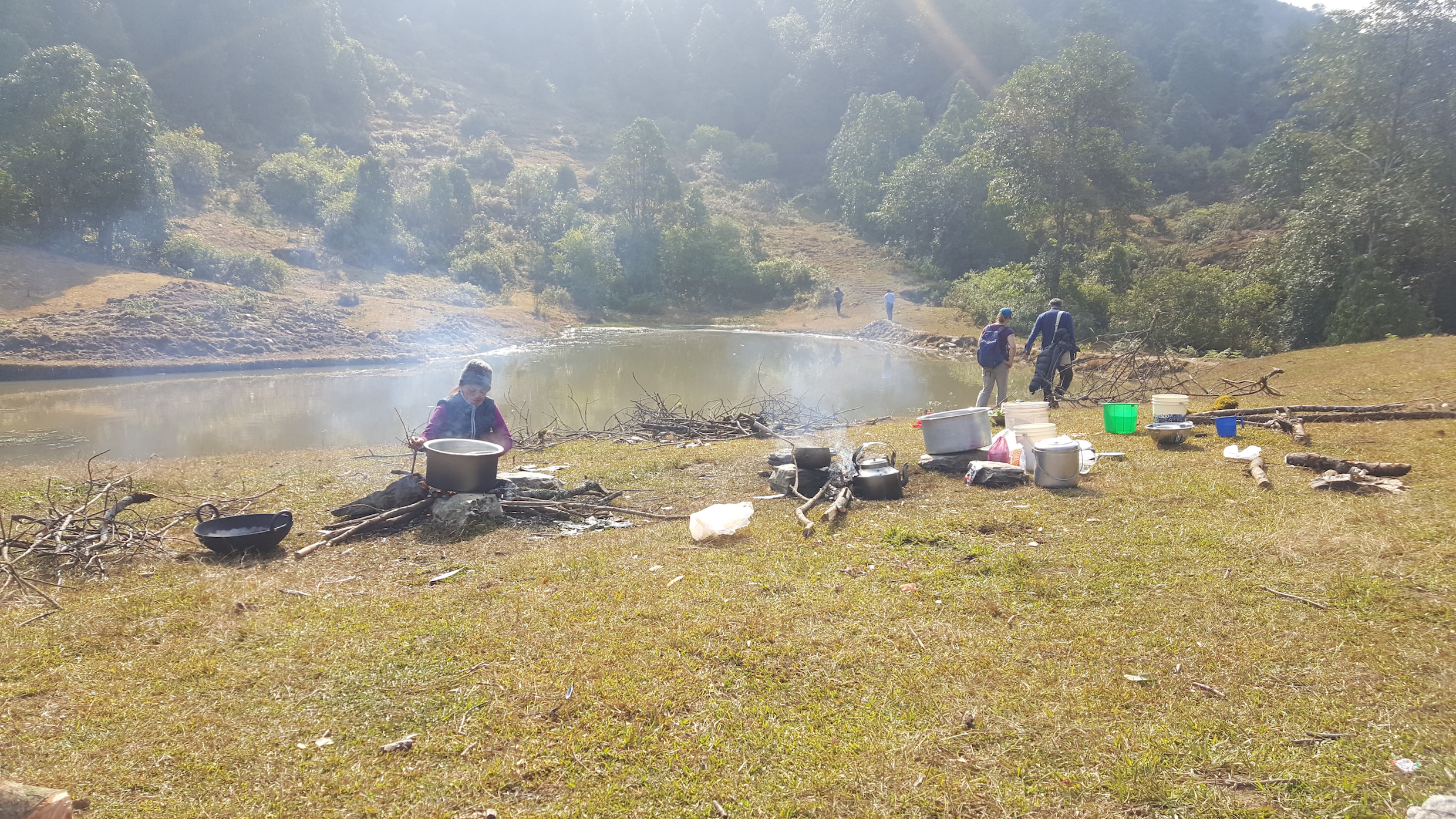

Les étangs communautaires de Panchase, situés dans les forêts et à proximité des habitations, sont un exemple d'infrastructure verte importante. Des étangs sains augmentent l'infiltration de l'eau en réduisant le ruissellement, peuvent réduire les catastrophes provoquées par l'eau comme les glissements de terrain et peuvent aider à stocker l'eau de pluie ; le stockage de l'eau de pluie est particulièrement important dans cette région montagneuse car il aide à protéger les terres agricoles et les zones en aval de l'érosion, des inondations et des glissements de terrain, et contribue également à assurer la disponibilité de l'eau tout au long de l'année. Les activités de restauration pour ce bloc de construction comprenaient la protection des sources d'eau, la réparation et l'entretien des anciens étangs, et le développement d'arrangements pour l'approvisionnement en eau. Dans un premier temps, l'UICN a aidé les communautés à cartographier les étangs, après quoi certains ont été classés par ordre de priorité en fonction de l'étendue des dégâts, du potentiel de restauration des eaux souterraines et du niveau de dépendance des communautés environnantes. Les matériaux disponibles localement ont été utilisés pour les réparations, la construction d'infrastructures d'irrigation de base et l'acheminement de l'eau à partir de sources voisines afin de maintenir l'approvisionnement en eau pendant la plus grande partie possible de l'année. Plus de 60 étangs communautaires ont été restaurés, couvrant trois sous-bassins versants différents à Panchase.
L'utilisation des connaissances locales et traditionnelles à tous les stades - cartographie, hiérarchisation des étangs et activités de restauration - est essentielle. L'utilisation de ces connaissances permet d'utiliser des matériaux locaux, ce qui maintient le coût de la mise en œuvre à un niveau peu élevé.
Bien que la disponibilité de l'eau ait augmenté, l'intégration avec les activités économiques telles que l'agriculture est insuffisante. En outre, des infrastructures non planifiées telles que la construction et la réparation de routes peuvent avoir un impact négatif sur les étangs. Une meilleure planification et une sensibilisation des communautés permettraient de remédier à ce manque d'intégration. Il convient de noter que l'entretien et la gestion des écosystèmes sont plus efficaces au niveau des sous-bassins versants, mais les limites administratives ne sont généralement pas respectées, ce qui signifie qu'il sera nécessaire de collaborer avec plusieurs unités administratives (par exemple, les villages).
Des ateliers et des formations de formateurs, organisés au niveau des villages, ont contribué à promouvoir la restauration des étangs dans différents villages et groupes de conservation communautaires.
La forte participation de la communauté à la mise en œuvre des activités de restauration des étangs a facilité la renaissance des connaissances indigènes et leur transmission aux plus jeunes. Elle a également favorisé la compréhension entre les différentes parties prenantes.